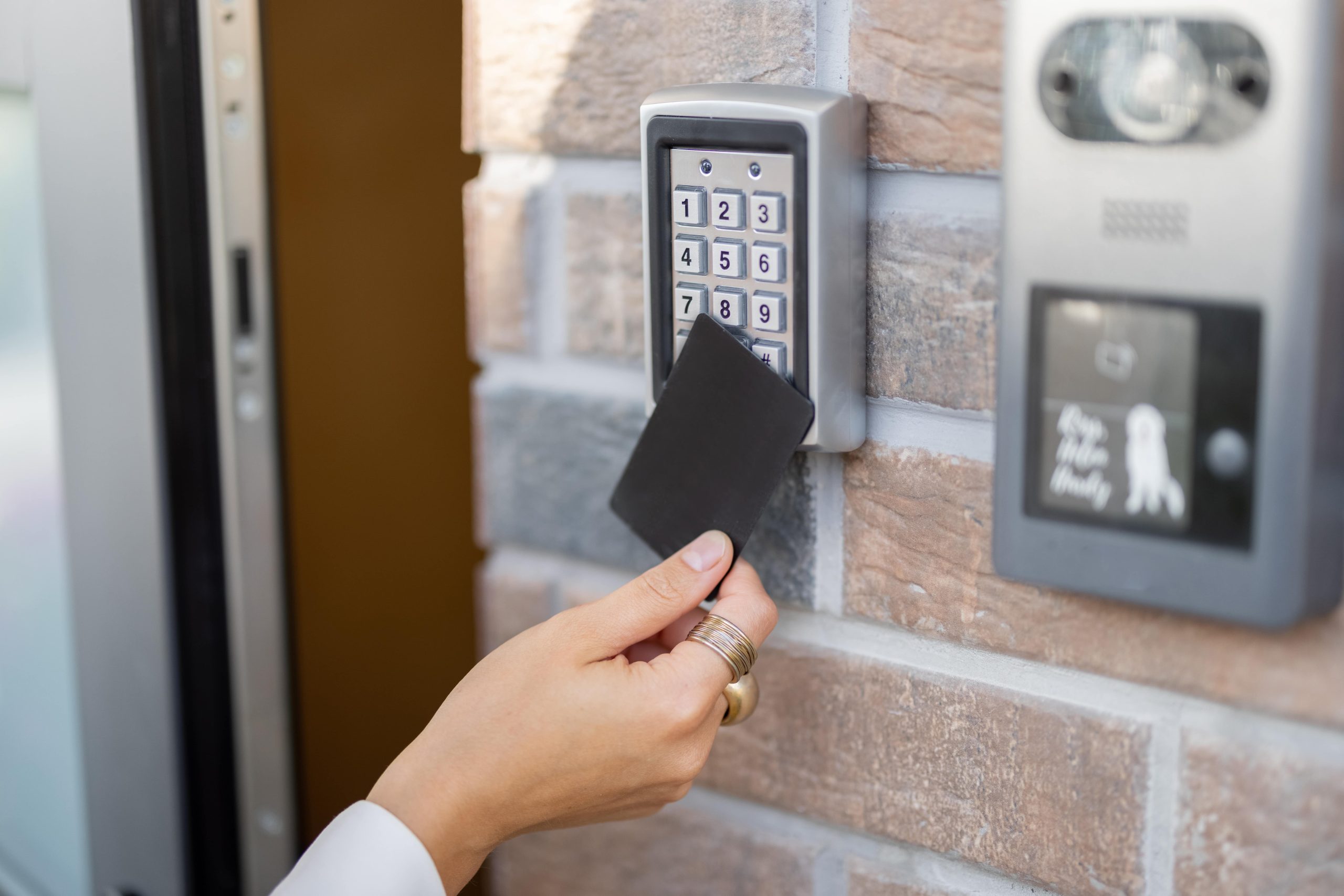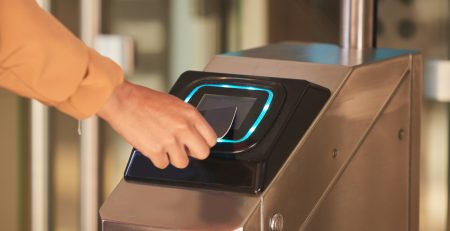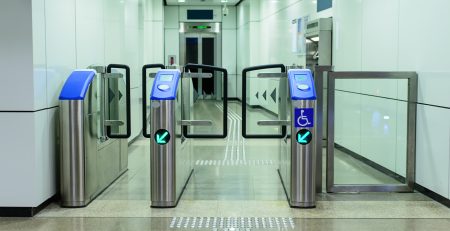Access Control: Which is Better, Card or Biometrics?
Access control is a priority these days, especially in condominiums. With the evolution of technology, several options have emerged, with cards and biometrics being the most popular. But which of these systems is the most suitable to guarantee the security and convenience of residents? In this article, we will analyze the advantages and disadvantages of each one to help you make the best decision.
What is Access Control?
Before we compare cards and biometrics, it is important to understand what access control is. It is a system that regulates who can enter or leave a certain location, whether it is a residential or commercial condominium. These systems can be manual or automated and aim to ensure the safety of residents and visitors.
How does Card Control work?
Magnetic card control or RFID (Radio Frequency Identification) is one of the most traditional methods used in condominiums. Each resident receives an individual card that must be held close to a reader to allow entry.
Advantages of Magnetic Card
- Affordable cost: The card system is often cheaper compared to more advanced technologies.
- Ease of use: Simple to operate, just bring the card close to the reader.
- Speed: The reading process is fast and efficient.
Disadvantages of Magnetic Card
- Loss or theft: : Cards can be lost or stolen, compromising security.
- Cloning: Although rare, there is a risk of card cloning.
- Physical dependence: Residents must always have their card with them to access the condominium.
How does Biometric Control work?
Biometrics uses individuals’ unique physical characteristics—such as fingerprints, facial recognition, or iris scanning—to grant or deny access. In recent years, this technology has gained popularity due to its accuracy and security.
Advantages of Biometrics
- High security: Since each person has unique biometric characteristics, it is virtually impossible to falsify or clone this data.
- Practicality: No need to carry cards or keys; just use your own fingerprint or face.
- Detailed record: The system stores information about who entered and left the condominium accurately.
Disadvantages of Biometrics
- High initial cost: Installing this type of system can be more expensive than traditional methods.
- Technical maintenance: Biometric systems may require specialized maintenance.
- Technical failures: In some cases, factors such as dirt on the sensors or software problems may prevent correct recognition.
Direct Comparison: Card vs Biometrics
| Feature | Magnetic Card | Biometry |
|---|---|---|
| Cost | Low | High |
| Security | Average (cloning risk) | High (unique characteristics) |
| Ease | Easy (need card) | Very easy (uses personal characteristics) |
| Maintenance | Low | High |
| Access Time | Fast | Fast |
Which is Best for Condominiums?
The choice between magnetic cards and biometrics depends on the specific needs of the condominium. If the focus is on an economical system that is easy to implement, magnetic cards may be a good option. However, if the priority is maximum security and convenience for residents, biometrics stands out as the ideal choice. Larger condominiums or those with a high turnover of visitors may benefit more from biometrics due to their precision in controlling access. Smaller condominiums or those with more restricted budgets may prefer cards due to their simplicity and lower initial cost.
Integration with Other Systems
An important advantage of both card and biometric systems is the possibility of integration with other electronic systems in the condominium. This includes:
- Remote concierge: Where access is monitored by a remote team.
- Surveillance cameras: That record images synchronized with access times.
- Home automation: Allowing doors to be opened automatically upon recognizing an authorized fingerprint or card.
Future of Access Control in Condominiums
With the advancement of technology, new methods are emerging on the market. Among them are:
- Advanced facial recognition – Uses smart cameras to identify residents without needing to touch.
- Control by smartphone – Applications that allow you to open doors remotely via Bluetooth or Wi-Fi.
- Hybrid systems – Combines different methods (card + biometrics) to further increase security.
These new technologies promise to further transform the way we manage entry and exit in condominiums.
Conclusion
Both magnetic cards and biometric systems have their advantages and disadvantages when it comes to access control in condominiums. The ideal choice depends on the condominium’s priorities in terms of cost, security, and convenience. If you are looking for a modern and efficient solution for your condominium, consider investing in the biometric system offered by C2H Solutions. Our team is ready to provide a personalized quote that meets your specific needs. Contact us through our website page and ensure greater security for your condominium!
Frequently Asked Questions (FAQ)
- What is the best method of access control for condominiums?
It depends on the needs of the condominium. For greater security, biometrics are recommended; cards are an economical option. - How does biometric access control work?
It uses unique physical characteristics (such as fingerprints) to grant or deny access to the condominium. - What are the advantages of magnetic cards in control systems?
They are easy to use and have a low initial cost; however, they can be cloned or lost. - Is it possible to integrate different control systems in a condominium?
Yes! Many condominiums opt for hybrid systems that combine magnetic cards with biometrics. - How can I request a quote to install a control system?
Simply contact us via the “Contact” page on the C2H Solutions website!












Comments (12)
💡 A escolha entre cartões e biometria pode impactar significativamente a segurança e a conveniência do seu sistema de controle de acesso. Conhecer as opções e suas vantagens pode transformar sua abordagem em segurança!
👉 Quer aprofundar seus conhecimentos sobre #Controle de Acesso? Explore mais conteúdos exclusivos em nosso blog na seção #Controle de Acesso.
🤝 Envie um email para nosso departamento comercial! comercial@c2hsolutions.com.br
💡 Ambos os métodos de controle de acesso têm suas vantagens, mas a escolha ideal depende das necessidades específicas da sua empresa. Avaliar os benefícios de cada um pode ser a chave para a segurança ideal!
👉 Quer aprofundar seus conhecimentos sobre #Controle de Acesso? Explore mais conteúdos exclusivos em nosso blog na seção #Controle de Acesso.
🤝 Envie um email para nosso departamento comercial! comercial@c2hsolutions.com.br
💡 A escolha entre cartões e biometria no controle de acesso vai além da segurança; envolve praticidade e custo-benefício. Ambas as opções têm suas vantagens, e entender isso pode fazer toda a diferença!
👉 Quer aprofundar seus conhecimentos sobre #Controle de Acesso? Explore mais conteúdos exclusivos em nosso blog na seção #Controle de Acesso.
🤝 Envie um email para nosso departamento comercial! comercial@c2hsolutions.com.br
💡 A escolha entre cartão e biometria no controle de acesso pode impactar diretamente a segurança e a conveniência da sua empresa. Cada solução possui suas vantagens, e entender isso é essencial para tomadas de decisão.
👉 Quer aprofundar seus conhecimentos sobre #Controle de Acesso? Explore mais conteúdos exclusivos em nosso blog na seção #Controle de Acesso.
🤝 Envie um email para nosso departamento comercial! comercial@c2hsolutions.com.br
💡 A escolha entre cartão e biometria realmente impacta a segurança e a praticidade do controle de acesso! Ambos têm suas vantagens, mas a tecnologia biométrica está se destacando pela conveniência e precisão.
👉 Quer aprofundar seus conhecimentos sobre #Controle de Acesso? Explore mais conteúdos exclusivos em nosso blog na seção #Controle de Acesso.
🤝 Envie um email para nosso departamento comercial! comercial@c2hsolutions.com.br
💡 A escolha entre cartão e biometria no controle de acesso pode impactar não apenas a segurança, mas também a conveniência do dia a dia. Avaliar as necessidades específicas da sua empresa é fundamental!
👉 Quer aprofundar seus conhecimentos sobre #Controle de Acesso? Explore mais conteúdos exclusivos em nosso blog na seção #Controle de Acesso.
🤝 Envie um email para nosso departamento comercial! comercial@c2hsolutions.com.br
💡 Ambas as opções de controle de acesso têm suas vantagens, mas a escolha ideal depende das necessidades específicas de cada ambiente. A tecnologia avança rapidamente, e conhecer as soluções mais recentes pode fazer toda a diferença!
👉 Quer aprofundar seus conhecimentos sobre #Controle de Acesso?
Explore mais conteúdos exclusivos em nosso blog na seção #Controle de Acesso.
🤝 Envie um email para nosso departamento comercial! comercial@c2hsolutions.com.br
💡 A escolha entre cartão e biometria no controle de acesso pode impactar diretamente na segurança e na conveniência do seu negócio! Ambos têm suas vantagens, e entender isso é essencial.
👉 Quer aprofundar seus conhecimentos sobre #Controle de Acesso? Explore mais conteúdos exclusivos em nosso blog na seção #Controle de Acesso.
🤝 Envie um email para nosso departamento comercial! comercial@c2hsolutions.com.br
#Controle de AcessoControle de Acesso: Qual é Melhor, Cartão ou Biometria?#Controle de AcessoSegurança com Inovação e Confiabilidade – C2H Solutions
#Controle de AcessoControle de Acesso: Qual é Melhor, Cartão ou Biometria?#Controle de AcessoSegurança com Inovação e Confiabilidade – C2H Solutions
#Controle de AcessoControle de Acesso: Qual é Melhor, Cartão ou Biometria?#Controle de AcessoSegurança com Inovação e Confiabilidade – C2H Solutions
#Controle de AcessoControle de Acesso: Qual é Melhor, Cartão ou Biometria?#Controle de AcessoSegurança com Inovação e Confiabilidade – C2H Solutions